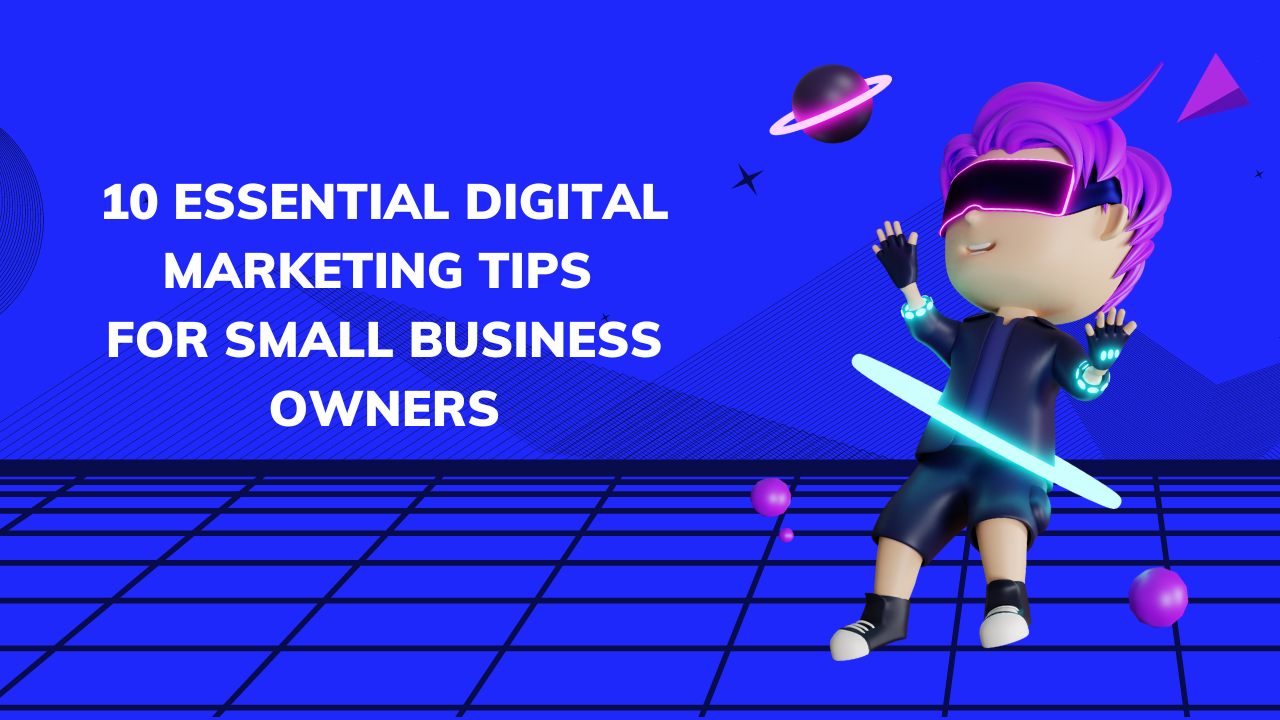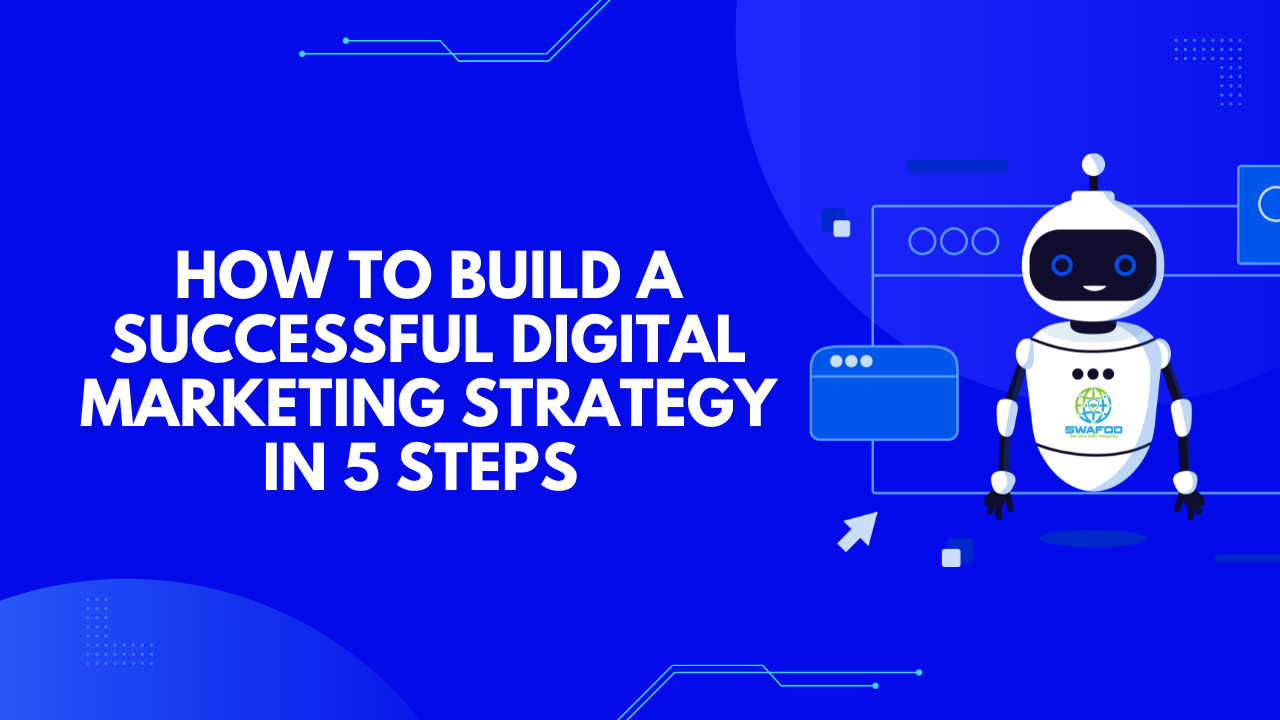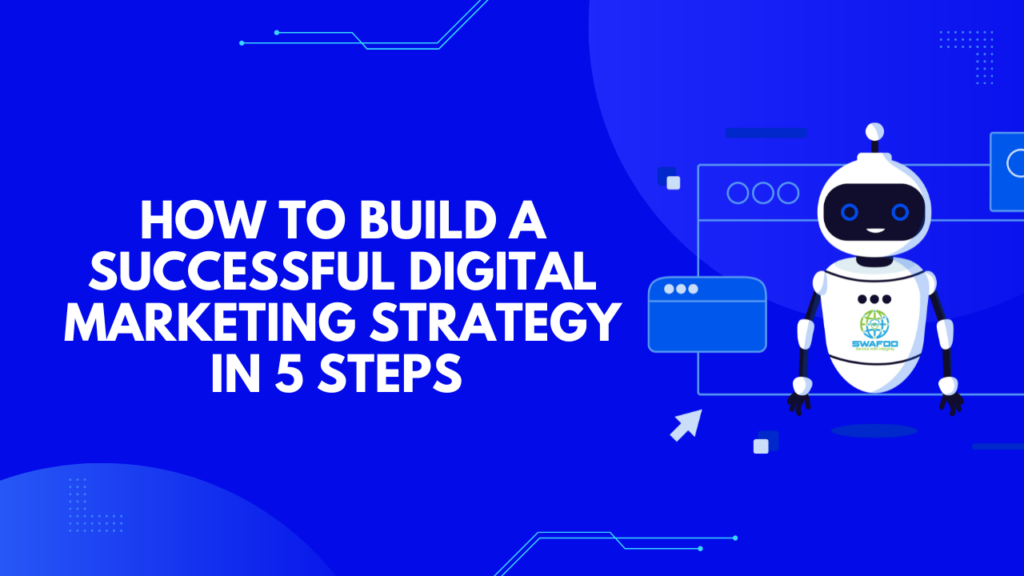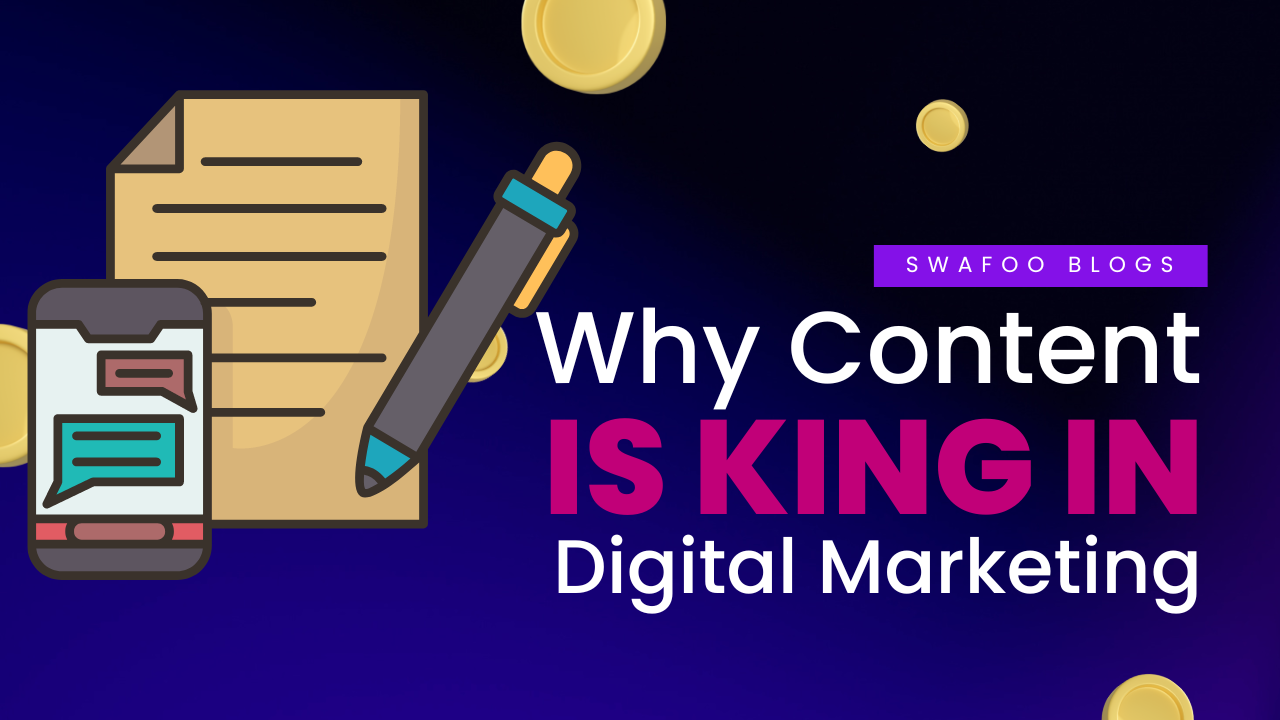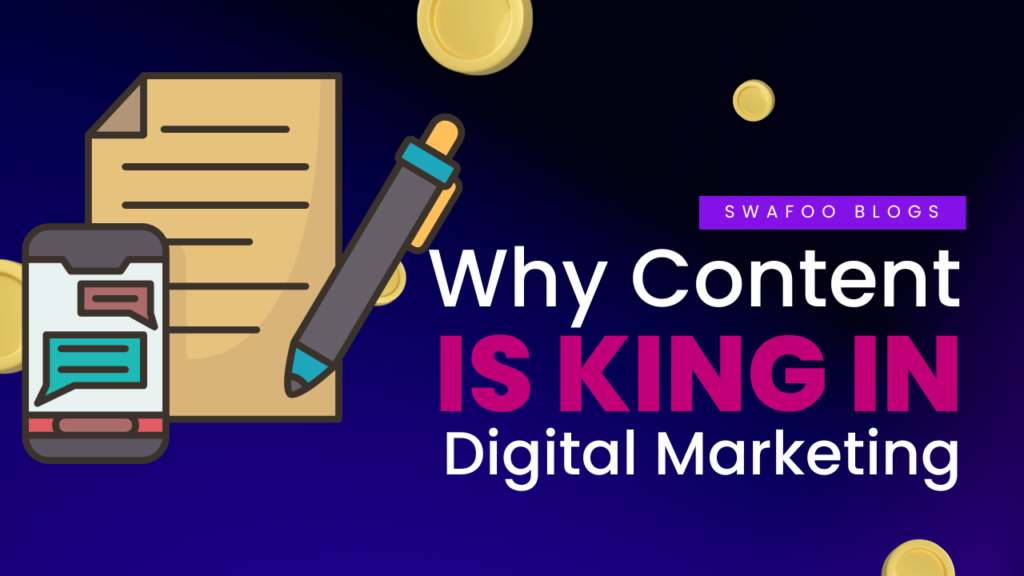10 Essential Digital Marketing Tips for Small Business Owners
10 Essential Digital Marketing Tips for Small Business Owners
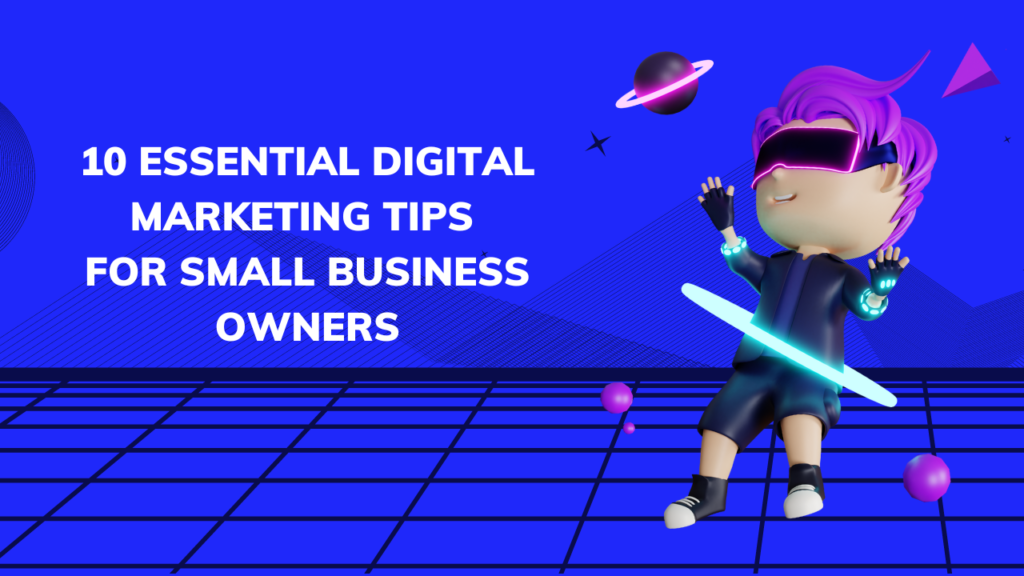
10 Essential Digital Marketing Tips for Small Business Owners
As a small business owner, you know that digital marketing is essential to your success. However, with so many different strategies and techniques out there, it can be overwhelming to know where to start. That’s why we’ve compiled a list of 10 essential digital marketing tips for small business owners.
From creating a strong social media presence to optimizing your website for search engines, these tips will help you reach your target audience and grow your business online. Whether you’re a solo entrepreneur or have a small team working with you, implementing these tips will give you the tools you need to succeed in today’s digital marketplace. So let’s dive in and explore the key elements of an effective digital marketing tips for small businesses!
Our 10 Digital Marketing Tips for Small Business:
To help businesses achieve their digital marketing goals, we have compiled a list of 10 digital marketing tips that should be included in any successful digital marketing plan. These tips include
Find Competitors in Market
Define Target Audience and Understand Customer
Google my Business Listing and Improve Customer Reviews
Work on Business Website Basics and User Experience
Create Interesting and Focused Content Strategy
Make Your Website Mobile Responsive
Optimize Local SEO/optimizing your website for search engines
Utilizing Social Media Channels Effectively
Develop Email Marketing Strategy
Work with Local Influencer for Brand Awareness
By implementing these essential tips into your digital marketing efforts, you can create a strong online presence that helps you connect with customers on multiple platforms and drives meaningful growth for your business.
Find Competitors in Market
For a small business, finding competitors in the market is essential for developing an effective business strategy. One way to identify competitors is by researching the industry and analyzing the products or services that are similar to yours. Examining competitors’ websites and social media accounts can also help identify their strengths and weaknesses, as well as their target audience. Once the competitors have been identified, the business can take measures to differentiate itself by focusing on unique selling propositions and improving the overall customer experience to stand out from the competition. Regular monitoring and analysis of competitors can help the business adapt to changing market trends and stay ahead of the competition.
Define Target Audience and Understand Customer
To effectively market a product or service, it is crucial to define the target audience and understand the customer. A target audience refers to the group of people who are most likely to be interested in what you are offering. Understanding your customer involves having a good understanding of their needs, wants, and interests and making a connection with your customers on a deeper level. Demographics play an important role in defining your target audience. These include variables like age, income, education, and location. By analyzing these factors, you can identify potential customers and tailor your marketing strategies accordingly. For example, if your product appeals to young adults, you might consider social media advertising platforms that are popular among that age group. However, simply knowing your audience is not enough. In order to effectively engage your potential customers, you need to have a good understanding of them and ensure that your product or service meets their wants and needs.
Google my Business Listing and Improve Customer Reviews
Defining your target audience is crucial when it comes to promoting your business. It refers to the specific group of people who are most likely to be interested in your products or services, and who you want to target with your marketing efforts. Understanding your customers, on the other hand, is about knowing their needs, preferences, and behavior patterns. One effective way to do this is to establish a strong digital presence for your business. This can be done through techniques such as search engine optimization to improve your visibility on Google searches, and social media marketing to reach your target audience on platforms like Facebook and Instagram. By understanding your target audience and customers, you can tailor your messaging and approach to resonate with them more effectively. This can result in more successful marketing campaigns, and ultimately, increased business success.
Work on Business Website Basics and UX/UI
When it comes to creating or revamping a business website, there are two essential areas to focus on: the basics and the user experience (UX) and user interface (UI). The basics include making sure your website has a clear and concise message, is easy to navigate, and has fast load times. Additionally, it’s crucial to ensure that your website is optimized for search engines and mobile devices. On the other hand, UX/UI entails designing a website that is visually appealing, user-friendly, and intuitive. You want your visitors to spend more time on your website while enjoying the experience. Some essential UX/UI considerations include choosing the right font size and color scheme, using clear and concise language, and incorporating user feedback to improve the website’s functionality. Ultimately, work on your business website’s basics and UX/UI will result in a website that not only looks great but also drives traffic, engages visitors, and ultimately leads to more business success.
Create Interesting and Focused Blog Content Strategy
Content marketing has become an essential part of online marketing. To establish a strong online presence, it is crucial to create interesting and focused content strategy. The content should be informative, useful, and relevant to the target audience. Blog content should be engaging and visually appealing with multimedia elements such as images, videos, infographics to attract and retain viewer’s attention. Engaging content also plays a vital role in social media marketing campaigns as it increases brand awareness, attracts more followers and enhances customer loyalty. A much more engaging format of content like podcasts and webinars can also be used to present information in an interactive and entertaining way. By creating focused content with the right message, it will be more likely to reach a larger audience, improve website traffic, and generate more leads. Develop a content strategy that meets the needs of your target audience and goals of your company.
Make Your Website Optimal for Mobile User
With the increasing use of mobile devices to access the internet, it is now more important than ever to ensure that your website is mobile responsive. This means that your website is designed to adapt to different screen sizes and resolutions, making it easy to view and navigate on smartphones and tablets. When your website is mobile responsive, it also means that pages load quickly and correctly, even on slower mobile connections. This ensures that users can access your content and interact with your website without any frustrating delays or glitches. By making your website mobile responsive, you can also reach the right people at the right time – mobile users who are on-the-go and looking for quick and easy access to information. So, if you want to ensure that your website is accessible to as many users as possible, it’s important to invest in mobile-responsive design.
Optimize Local SEO / Optimizing Your Website for Search Engines
Optimizing your website for search engines is crucial if you are a local business looking to increase online visibility. Local SEO, or optimizing your website for local search, is the practice of optimizing your online presence to attract more local traffic to your website. With more people turning to the internet to find local businesses, having a strong local SEO strategy can help ensure that your business appears at the top of search results. This can drive organic traffic to your website, which can ultimately lead to more conversions and sales. SEO is the practice of optimizing your website’s content, structure, and links to ensure that search engines can easily crawl and index your site. By using relevant keywords and phrases in your website copy and meta descriptions, you can increase your search engine rankings and improve visibility in local search results. Pairing a strong local SEO strategy with other digital marketing tactics can help you grow your business and reach more potential customers.
Utilizing Social Media Channels Effectively
Utilizing social media channels effectively can be a game changer for your business. It is essential to choose a social media platform that is relevant to your business, create engaging content, and promote your brand effectively. Social media platforms provide an excellent way to connect with a vast audience, and with effective promotion and content, they can convert new users into customers. Social media also provides an additional value by allowing businesses to interact with their customers and receive feedback, leading to improvements in products or services. One of the key benefits of social media is that it allows businesses to build relationships and loyalty with their customers. By providing consistent and valuable content, businesses can establish themselves as an authority in their industry. Overall, proper utilization of social media channels is crucial for any business looking to remain competitive in today’s digital world.
Develop Email Marketing Strategy
Developing an email marketing strategy is a crucial part of any online business. It involves building an email list of subscribers who have opted in to receive regular communication from your brand. Email marketing is a powerful marketing tool that allows you to reach out to your audience in a more impactful and traffic-driven way. It can help you to increase your website traffic, generate leads, promote products and services, and establish a long-lasting relationship with your customers. To develop a successful email marketing strategy, you need to start by defining your goals, segmenting your list, creating engaging content, and analyzing your results. It’s important to keep your subscribers engaged and interested in your brand by sending personalized emails, providing valuable information, and offering promotions and discounts. If you want to get in touch with your target audience, email marketing is a cost-effective and measurable way to do so.
Work with Local Influencer for Brand Awareness
In today’s digital age, businesses are always looking for ways to increase their brand awareness to the market. One method that has proven successful is working with local influencers as brand ambassadors. These influencers have established a loyal following on various social media platforms, making them a valuable partner to collaborate with. By creating a strategic partnership with local influencers, businesses can broaden their reach and tap into a new audience pool. Collaboration with these influencers can prove to be effective through various marketing techniques like video marketing. With millions of users watching video content online, these influencers can create engaging videos that showcase a brand’s product or service, ultimately resulting in increased sales and brand recognition. Therefore, creating a partnership with a local influencer as a brand ambassador can be a powerful tool in your marketing strategy to grow your business in the long run.
Related FAQ:
Q: What is digital marketing strategy?
A: Digital marketing strategy is a plan of action designed to achieve business goals through various digital channels and techniques. It includes identifying the target audience, creating content, and selecting the appropriate channels and platforms to promote the business.
Q: Why is it important for small businesses to have a digital marketing strategy?
A: In today’s digital age, having a digital marketing strategy is essential for small businesses to increase their visibility online and reach a wider audience. It can help establish brand awareness, build relationships with customers, and ultimately drive sales.
Q: What is the best way to begin developing a digital marketing strategy?
A: The best place to start is by conducting a thorough survey of your target audience. Understand their needs, preferences, and behavior patterns to develop content that resonates with them. This will help guide your strategy and ensure that your efforts are focused on meeting the needs of your customers.
Q: How important is a LinkedIn profile for small business owners?
A: LinkedIn is one of the best digital marketing tools available for small business owners. It provides a platform to showcase your expertise, build relationships, and connect with potential partners and customers. Building a strong LinkedIn profile is a great place to start.
Q: What is local search?
A: Local search is the practice of optimizing a business’s online presence to increase visibility in local search results. This means making your business visible to people searching in your geographical area. It’s an important part of any small business’s digital marketing strategy.
Q: How can building an email list help small businesses?
A: Building an email list gives you the opportunity to reach out to your audience on a deeper level. It gives you a direct line of communication with people who are interested in your business. This can help improve customer loyalty and drive sales.
Q: How can small businesses get in touch with potential partners?
A: There are many ways small businesses can reach out to potential partners, including LinkedIn, email, and social media. It’s important to think strategically about who you want to partner with and why, and then develop a personalized approach to reach out to them.
Q: What is a Google listing?
A: A Google listing is a free online listing of a business on Google’s search engine results page. It helps increase visibility online and makes it easier for potential customers to find your business. It’s an essential part of any small business’s digital marketing strategy.
Q: How important is link building for small businesses?
A: Link building is one of the top 10 digital marketing techniques available online. It’s an essential part of any small business’s digital marketing strategy since it helps improve visibility online and drive traffic to your website. The more high-quality links you have to your site, the better its search engine ranking will be.
Q: What are some easy tools available to small businesses for digital marketing?
A: There are many easy-to-use tools available to small businesses for digital marketing, including social media platforms, email marketing services, and online giveaway tools. These can help small businesses get the basics right and improve visibility online without spending a lot of money.
Share This Post
Subscribe To Our Newsletter
Get updates and learn from the best
More To Explore

How to set up Google Analytics
Google Analytics 4 Track? Important Google Metrics in 2024 Creating exceptional content takes time and effort, and naturally, you want to know how well it’s

The Google Search Algorithm Leak: Implications and How You Can Benefit
You’ve probably heard about the recent buzz surrounding the Google search algorithm leak and are curious about its potential implications. While some may advise caution,

